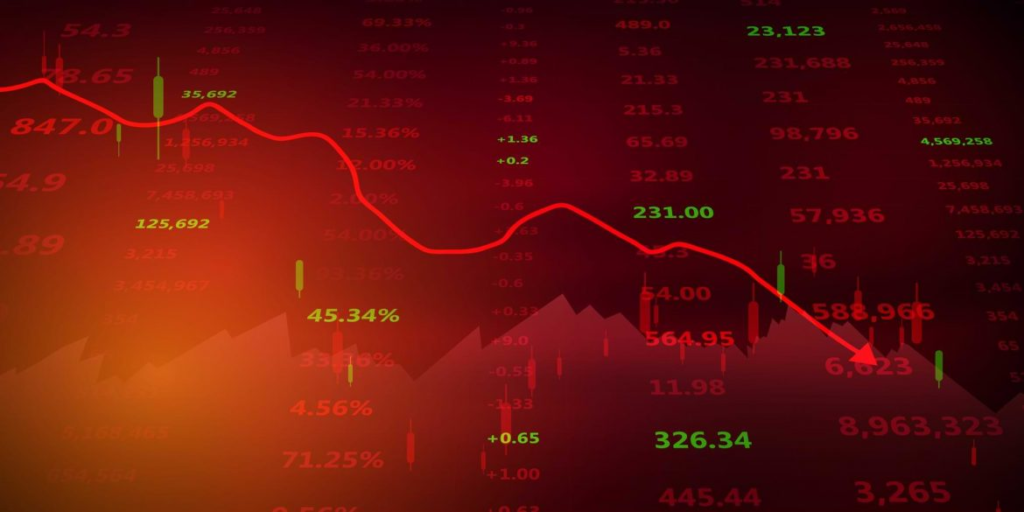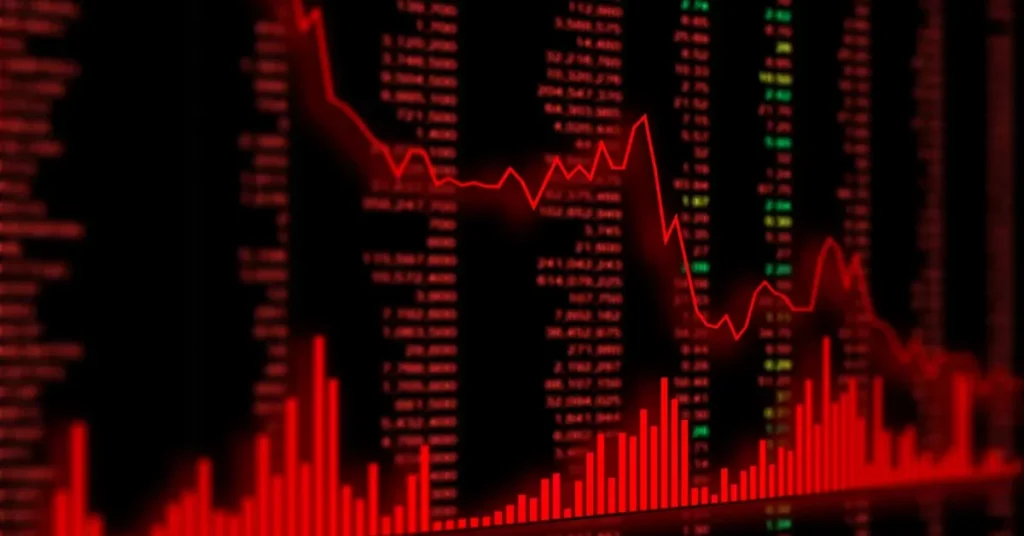In the wake of the FTX crisis, the market underwent a significant shift. The global market cap of cryptocurrencies tumbled as low as 786 billion dollars while Bitcoin fell to a two-year low.
FTX Group Companies has commenced with chapter 11 of the Bankruptcy code where the corporation is trying to keep its business alive and pay its creditors over time. The result of this has left the crypto market on shaky ground.
So What Caused the Market to Collapse?
The recent slump in the market can is due to many macro factors. But what has really shaken up the industry, however, is the FTX insolvency crisis.
FTX, one of the largest global crypto exchanges, crashed this week. Everything was going fine until CoinDesk published a report that raised questions about the financial health of FTX. Soon, widespread panic ensued among investors as insolvency rumours circulated.
What followed was massive sell-offs as investors withdrew their assets from the exchange.

CZ, the CEO of Binance, announced on Twitter that Binance would offload nearly $584 Million worth of FTT (native token of FTX) tokens as part of the liquidation process. The holdings were equivalent to 17% of the circulating supply of FTT.
These factors caused the FTT token to crumble. The token tumbled from $22.79 on Nov 7 to about $15.04 on Nov 8. The turmoil shook the rest of the market, and most coins were bleeding red.
Things started to go south when Binance revealed its intention to buy FTX. FTT nose-dived after the announcement, from $19.01 on Nov 8 to $3.59 on Nov 9. The announcement eventually soothed investors’ nerves, and the FTT token showed signs of recovery.
But in an unexpected change of events, Binance pulled out of the agreement less than 48 hours after the initial announcement. FTT collapsed to new lows. It traded with a loss of 90% of its value when compared to last week.
The FTX disaster is eerily similar to the Terra meltdown in May that threw the markets into a tailspin.
Let’s Take a Look at the Timeline of Events
Nov 2
- Report of Alameda (SBF-backed company) holding a significant amount of FTT surfaced.
Nov 5
- Whale-wallet trackers detect enormous FTT movement to Binance.
Nov 6
- Caroline Ellison, Alameda CEO, explains the balance sheet.
- CZ, Binance CEO, announces plans to liquidate its entire FTT holdings.
- Alameda CEO offers to buy Binance-FTT holdings at $22 per piece.
Nov 7
- FTX bank run begins
- CZ declines the over-the-counter offer of Alameda
Nov 8
- SBF announces the plan to sell exchange to Binance
- Rumors of FTX’s legal and compliance staff quitting circulates.
Nov 9
- FTX websites go offline
- Binance backs out from the deal.
- BTC hits a multi-year low of $15,600, and other altcoins bleed red.
- SBF informs investors that he needs $8 billion in emergency funding.
- The FTX website warns users against making deposits and cannot process withdrawals.
Nov 10
- SBF publicly apologizes to users and acknowledges his mistakes.
Nov 11
- FTX, Alameda Research, and 130 affiliated companies file for bankruptcy, and SBF resigns as CEO

How Exactly Did SBF Cheat the Market With Alameda & FTX?
Alameda is Sam Bankman-Fried’s (ironic name, right?) first venture. It was a wildly successful crypto hedge fund he found after getting his start at arbitraging the Kimchi Premium and Japanese premium.
After the arbitrage chances dried up, Alameda switched to becoming a market maker and made enormous profits using quantitative trading techniques. SBF then founded FTX. And the exchange became the fourth biggest exchange in the world.
Alameda was the first market maker for FTX in the early days. It gave the exchange essential liquidity. The current narrative of the Alameda-FTX is one of brazen corruption. Outlined via jonwu.eth twitter thread (https://twitter.com/jonwu_/status/1590099703298785280) FTX gave Alameda priority orderflow, allowing its sister hedge fund to front-run other traders.
The significance of this first-mover advantage cannot be under stated. With a few privileged basis points on the 3rd largest exchange, SBF was using FTX as a perpetual money maker for Alameda.
The TL;DR Summary:
FTX creates FTT tokens -> Alameda obtains these tokens at low prices -> FTX pumps the token -> Alameda gives FTT back to FTX as collateral to borrow FTX’s user deposits.

Cryptocurrencies that were Affected by the Collapse
BTC hit a multi-year low price of $15.6K, and the total market cap lost almost 25% of its value within a few weeks.
Solana lost almost 67% of its value doing the crash. SBF was an early investor in Solana, and Alameda’s holdings are mostly SOL. It explains SOL’s free fall.
The crash severely impacted cryptos exposed to SBF’s companies. Serum (SRM), a decentralized exchange asset, crashed by almost 65 percent. REN, a cross-chain crypto custodian service that joined forces with Alameda, has also lost nearly 47%.
Similarly, other tokens backed by SBF, such as Bonfida (FIDA), Raydium (RAY), and Maps (MAPS), have fallen by about 50% as well. Some coins have recovered, and the total market cap now stands at 913 billion dollars. Bitcoin is trading at over $17.3K.
Could This Have Been Prevented?
With the year of crypto breakdowns still going strong, the fallout of the FTX exchange will be extensive. Could the crash have been avoided?
Stringent regulations could have prevented the FTX meltdown and the market crash. They could have easily prevented SBF from creating the Alameda-FTX money-making cycle.
CZ also played a vital role in the crash. He deliberately created different FUDs to manipulate the market. He even declined Alameda CEO’s $22 offer. A strange move considering he could have sold the FTT token for a higher price.
Crypto exchanges could have implemented circuit breakers or price bands as the stock exchanges did. It could have controlled the crash to a certain extent.
The number one culprit for the current crisis is SBH and his ingenious but greedy system that almost fooled everyone.

Will the Market Collapse Further?
The recent recovery could be a fake relief rally, and the market could drop further. Potentially there are cascades of margin calls that the crypto market could face. If triggered it will result in significant market liquidations.
This next round of crypto deleveraging brought on by the failure of FTX and Alameda Research is serious. Entities with better balance sheets available in the crypto space to help those with little capital and heavy leverage are decreasing.
Compounded by the fact that FTX and its affiliated companies have filed for bankruptcy, recovering funds from such companies is long and challenging. This would mean there is a ripple effect throughout the market.
The chances of a further market collapse is highly likely. Crypto lender Blockfi has already announced it cannot continue business as usual. Halting customer withdrawals in line with its terms and conditions. Any project teams, investors or business that had funds on FTX would all be affected. This will have a cascading effect on the ability to settle bills and payrolls. This event could have a greater detrimental effect on the cryptocurrency market than the Terra LUNA-USDT fiasco.
Additionally, if Bitcoin price fall further, it could force the miners to liquidate their BTC holdings to cover operational costs.
The wisest course of action now would be to stay calm, evaluate the circumstances, and exercise caution before making any financial decisions.
Cryptocurrency markets are cyclical and should rebound from the current market conditions if historic data is to be trusted but no-one knows how long that could take.
Conclusion
Even titans can fail. The bigger they are, the harder they fall. FTX crash serves as a reminder of that.
The FTX crash dispelled numerous misconceptions about the bitcoin industry while teaching investors to invest cautiously.
It emphasizes the need for open, heavily leveraged systems that can deleverage in a controlled way. Ironically, it highlights the necessity of crypto regulation to protect customers, investors from bad actors.
Also, crashes like this affects the entire market while eroding investor confidence. Furthermore, this is the second occurrence of this kind this year.
The crypto sphere has previously endured even worse catastrophic disasters. It is indeed tragic, but winter does proceed spring.




